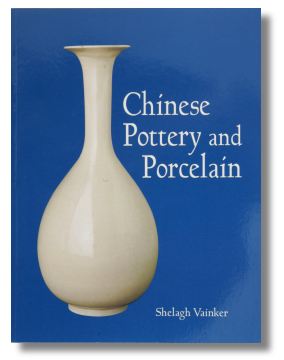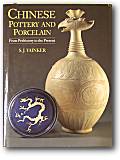Chinese Pottery and Porcelain:
From Prehistory to the Present
By Shelagh Vainker
Review by Jan-Erik Nilsson on March 25th, 2008 // Filed under Chinese Porcelain (in general), Ming Porcelain

CHINESE POTTERY AND PORCELAIN: FROM PREHISTORY TO THE PRESENT
Covers ceramics from the Neolithic period to the present. This is a good “summary” and draws on pieces from the British Museum. The illustrations are good and the text consise and on the dot. There is something as too much, when it comes to information and this is “enough” in most cases. It is a good buy if you are looking into just one bok. I like it because I can trust the information, and the selection of illustration is good. It is actually hard to find just a few pieces that fairly well represent a whole period. The point of view is more humanistic than Valenstein’s (MET) book which is also a very good choice but which tends to do a lot of listings. I know, buy both. (LEFT: Second edition, 2005)
The publisher adds the following:
The art of Chinese ceramics encompasses prehistoric clay figurines of pregnant women, bronze ritualistic bells, exotic earthenware figures of merchants in the Central Asian silk trade, Ming writing-boxes bearing Arabic inscriptions, Taoist shrines adorned with lacquer and gilding, and pagoda tiles molded with monster masks. It’s an art as richly varied as Chinese civilization itself, as this resplendently illustrated survey makes abundantly clear.
Vainker, a curator at the British Museum, draws on the museum’s vast collection of Chinese stoneware, porcelain and religious sculpture in her absorbing narrative. Proceeding from the riotous gaiety of Tang “three-color wares” (A.D. 618-906) to the classical equilibrium of 12th-century Song pottery to a modern, softly glowing “eggshell” porcelain vase, Vainker vibrantly charts “a continued transformation of the contemporary into the collectible.”
Well this is not entirely the full truth. The author actually uses up close to 140 out of a total 216 (240 with appendixes) pages to approach actual porcelain and not before p 134 do we enter the world of blue and white porcelain. Still this is a splendid book which I highly recommended. (RIGHT: First edition, 1991.)
Leave a Comment
You must be logged in to post a comment.

